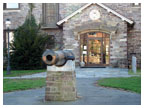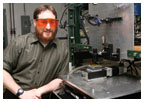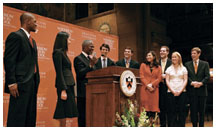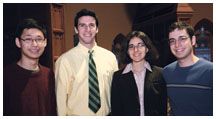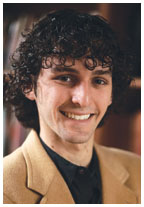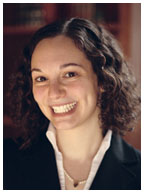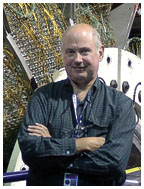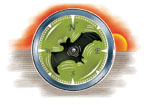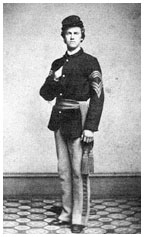
|
January 24, 2007: Notebook
Clubs, University join to expand social options
DEC board plans to renovate Cannon Club for ’08 reopening
BREAKING GROUND
Mechanical and aerospace engineering
Annan, honored by students, warns of nuclear peril
Six seniors named as Marshall, Sachs scholars
U-Store prepares for a future without books
Princeton offers planning update
A packed house for Meryl Streep
Exterior work on the buildings of Whitman College is nearly complete as the University prepares to open its first two four-year residential colleges in September. From left are Lauritzen Hall, South Baker Hall, and 1981 Hall.
A row of arches taking shape at Whitman College will be known as Wright Cloister in honor of Thomas H. Wright ’62, former University vice president and secretary. (Ricardo Barros) |
Clubs, University join to expand social options
Hoping to promote a stronger connection with the eating clubs, the University will increase its financial aid for juniors and seniors to cover the average cost of a club membership. At the same time, the clubs have agreed to allow a limited number of members to join the new four-year residential colleges that open in September.
“We want to provide more choices for undergraduates while increasing the connectedness between the eating clubs and the University,” said Princeton Executive Vice President Mark Burstein, who negotiated the agreements in meetings with graduate board presidents and undergraduate officers of each of the clubs. The agreements were announced Nov. 28.
In determining financial aid, the board rate for upperclassmen will be calculated at the average cost of an eating club membership contract, not including social or initiation fees. For the current year, that would be about $6,300, compared to the University’s board rate of $4,315.
About 75 percent of juniors and seniors are members of the 10 eating clubs, a number that has remained relatively constant in recent years. Calculating the board rate at a higher level will apply to all juniors and seniors on financial aid, whether they join a club or not, and will cost the University more than $2 million a year.
“Trying to find a way [to ensure] that economic considerations would not be a part of an undergraduate’s choices at Princeton was a major focus for us,” Burstein said. While eating club fees vary, he said no club’s membership fee is more than $7,000.
“This is an opportunity for more diversity in the clubs,” said Llewellyn Ross ’58, who is chairman of both Colonial Club’s graduate board and the Graduate Interclub Council. With the agreements, Ross said, the University recognizes that “the clubs are an integral part of the undergraduate experience, and that says a great deal about the long-term viability of the clubs.”
The opening of the first two four-year residential colleges — Mathey College, centered on Hamilton, Joline, Blair and Edwards halls; and the new Whitman College, which is still under construction — marks a major effort by Princeton to expand the living and dining options for undergraduates.
The new agreements provide for joint memberships in both a residential college and an eating club, though each club capped the number of joint memberships that would be permitted. Ivy Club said it initially would allow two juniors and two seniors to live in a residential college, while Quadrangle and Colonial each said they would allow up to 10 juniors and 10 seniors to join a college.
Students with joint meal plans will pay their club board, and the clubs will reimburse a portion to the University for meals at the residential colleges. All juniors and seniors in the colleges will be required to take a meal plan of at least 95 meals per semester. In addition, all juniors and seniors will be able to eat two meals each week at the colleges for free.
The number of students who join both a club and a four-year college “is not the litmus test” of success, Burstein said. “Whether the number is 10 or 60 students is not as important as having the option,” he said. He noted that a total of only 200 spaces for juniors and seniors are planned for the two colleges, in addition to 50 spots for residential college advisers.
The sign-in and Bicker clubs admit their members in early February. Three weeks later, upperclassmen will apply for housing, and at that time the number of students seeking shared meal plans will be known, Burstein said.
The University in the past has allowed students on financial aid to apply the board portion of their grant toward their eating club meal costs. Some students applied for a loan to cover the additional cost of eating at a club; Burstein said that between 50 and 100 undergraduates currently have such loans.
That policy was criticized as creating a social caste system at Princeton, requiring students who could least afford it to come up with a minimum of $2,000 a year to participate in the social life that is centered on the clubs. “In this way the eating club system as it now stands creates two distinct and unequal classes of students,” Robert Braun ’07 wrote in The Idealistic Nation, an online student publication, in 2005.
The University and the eating clubs “have had an ongoing conversation for over 100 years, and this could be seen as one more step in that conversation — this is not a dramatic turn in the road,” Burstein said. The University has not made any guarantees about the clubs’ future, he said, but “there is every intention to try to find ways that the clubs can continue to thrive.”
The new agreements contain some “small ways” the University can help the clubs, including an offer to provide and install wireless service in each club without charge by the end of the academic year, Burstein said.
Citing the perception that the University and the eating clubs have
been “at odds” over a number of issues, Ross said that there
is now “a real understanding that the clubs are not necessarily
the axis of evil that has been painted.” There’s a recognition
that the University “cannot feed everybody,” he said, “and
the clubs are very important for the role they play.” ![]()
By W.R.O.

Cannon Club’s doors could reopen in 2008. (PRINCETON ALUMNI WEEKLY) |
DEC board plans to renovate Cannon Club for ’08 reopening
Cannon Club, one of Prospect Street’s most boisterous clubs until it closed its doors more than three decades ago, could reopen early next year.
“We’re in the process of completing arrangements with the University that would result in clearing the way for the club to reopen in the Cannon building,” Warren Crane ’62, president of the combined graduate board of Dial, Elm, and Cannon, said in mid-December.
Crane said the board, which represents more than 5,000 alumni of the three clubs, is ready to proceed with extensive renovation and restoration work necessary for the building to serve as an eating club once again. He said a $6 million fund drive is planned for the work and to secure an endowment for the new club.
If construction can be completed during 2007, Crane said, the club could reopen in February 2008. Most of the initial membership would be sophomores, he said, adding that the club would prefer to avoid having a “detrimental effect” on the other 10 eating clubs by initially enrolling a large number of juniors and seniors.
Crane said it has not been decided what the new club will be called or whether the club will be selective or nonselective, though he said the graduate board is “not unaware of the fact that the selective clubs have maintained a greater degree of stability from year to year.”
While the arrival of the four-year residential colleges this fall creates some uncertainties for the eating clubs, Crane said, “If we do what we need to do, we potentially will be in a position of greater strength than some of the other clubs.”
After Cannon Club closed its doors in 1973, it was acquired by the University and renamed Notestein Hall, serving as a home for the Office of Population Research and the Writing Center.
In 1990, Dial, Elm, and Cannon clubs merged to form DEC, with members of the new club taking their meals at Elm and some members housed in Dial Lodge. Financial problems forced the club to close in 1998, and it sold its properties to the University and negotiated an option to repurchase the Cannon Club facility by April 2001. The board exercised its option to buy the property but continued to lease the building to the University until August 2004. Except for club events, the building basically has been unoccupied since then.
Ralph Wright ’88, treasurer of the DEC graduate board, said issues that included back rent to be paid by the University and whether the club would remain part of the campus’s heating system required lengthy negotiations.
Cannon Club developed a reputation as one of Prospect’s most rowdy clubs in the years before it closed, though Crane said that “the reputation of the club really varies depending on what age alumni you’re talking to.”
He said the graduate board will be looking for members “who are
good solid citizens of the University community and who will enjoy themselves
at the club, and they will build the reputation of the club going forward.”
![]()
By W.R.O.

Anne-Marie Slaughter ’80, dean of the Woodrow Wilson School, is chairing a task force formed to advise Secretary of State Condoleezza Rice on the best ways to support democratic groups in other countries.
“We are seeing growing popular support for a return to a kind of realism in foreign policy that essentially gives governments a free pass on how they treat their people as long as they can deliver domestic and regional ‘stability,’” Slaughter, who leads the State Department’s Advisory Committee on Democracy Promotion, said in an e-mail.
She said the committee hopes to ensure that U.S. foreign policy actively supports democratic groups abroad and helps them build the institutions necessary for democracy to work.
Rice visited Princeton at Slaughter's invitation in September 2005, delivering the keynote address at the Wilson School’s 75th anniversary celebration.
The advisory committee met with Rice Nov. 6 in Washington, D.C., six weeks after the release of the Princeton Project on National Security report, co-directed by Slaughter and Wilson School professor G. John Ikenberry, that proposed a new national security strategy (see Notebook, Oct. 25).
Elizabeth Colagiuri *99, executive director of the Princeton Project, said the goal has been to get the report “into the debate” — both as a basis for policies now under consideration and for those under future White House administrations. Briefings have been conducted on Capitol Hill, and Slaughter cited “a warm reception by high-level officials” in Washington.
She noted, however, that “many of those who are most enthusiastic
nevertheless lament the difficulty of selling complexity against simplicity.”
In contrast to President Bush’s concept of an overriding war against
“Islamo-fascism,” Slaughter has maintained that “we
have to be prepared to meet multiple threats at the same time.”
![]()

Craig Arnold, an assistant professor of mechanical and aerospace engineering, uses a laser direct-write printer, right, to make tiny batteries and solar panels. (Beverly Schaefer) |
BREAKING
GROUND:
Mechanical and aerospace engineering
Working to make batteries smaller, with lasers and sophisticated ‘ink’
In engineering and applied science, thinking small can lead to big ideas, like computers that would fit on the head of a pin with plenty of room to spare. But while nanotechnology may capture the imagination, assistant professor Craig Arnold has found interesting work on a slightly larger scale. “There are some cases where you don't want very, very small,” he explains. “You just want sort of small — mesoscale patterns — things that are somewhere on the scale between microns [millionths of a meter] to millimeters. There are many applications in this size scale that are important, and that’s what we focus on.”
Arnold, who joined Princeton’s mechanical and aerospace engineering department in 2003, received a $500,000 National Science Foundation CAREER grant last year for his work with tiny batteries, solar panels, and other energy storage devices called ultracapacitors. By making power sources smaller, he says, researchers can place them inside devices like sensors on food packaging that would tell consumers if perishable foods are still fresh, and make implantable medical devices, or environmental sensors. But creating and placing the power sources requires precision. For that, Arnold uses a technique called laser direct-write printing, which enables him to create small, sharply defined patterns of energy storage materials.
The laser direct-write printer in Arnold’s lab uses a remarkably simple setup. Researchers spread a thin layer of the “ink” with which they are printing — a lithium solution for batteries, for example — on a glass plate. The plate is suspended, ink side down, and a laser pulse heats the plate from above, vaporizing the ink and releasing it onto a surface below. The plate and the surface are programmed to move in precise patterns. Laser direct-write printing is flexible — Arnold can redesign patterns with standard computer drafting software — and fast, with a laser that can pulse up to 250,000 times per second.
With batteries, there is always a trade-off between size and longevity: The less material a battery contains, the less energy it can provide. But Arnold’s lab is working to make small batteries more powerful, using lasers to modify the properties of battery materials and increase their energy density.
Arnold’s work often leans toward fundamental research, but his
conversations with undergraduates inevitably drift back to applications,
particularly in the field of energy storage. “It’s a fun topic,”
he says, “because they always think of new reasons why you might
want to have a small battery.” ![]()
By B.T.

Kofi Annan, former secretary-general of the United Nations, holds up the Crystal Tiger Award he received from undergraduates after delivering a farewell address at Richardson Auditorium. (Denise Applewhite/Office of Communications) |
Annan, honored by students, warns of nuclear peril
Delivering one of his four farewell addresses, U.N. Secretary-General Kofi Annan spoke at Princeton Nov. 28 about using diplomacy to reduce the threat of nuclear weapons.
Princeton’s Richardson Auditorium was the second stop on Annan’s tour. Annan, who recently left the United Nations after a decade in its top post, also spoke in Addis Ababa, Ethiopia; New York City; and Independence, Mo.
In his speech to a full house of students, faculty, alumni, and guests, Annan said that proponents of non-proliferation efforts and of disarmament must work in parallel to stanch the threat of nuclear weapons. Currently, he said, each side is waiting for the other to move first. “The result is that mutually assured destruction has been replaced by mutually assured paralysis,” he said. “This sends a terrible signal of disunity and waning respect for the [nuclear non-proliferation] treaty’s authority.”
Proponents of disarmament should not allow the lack of progress in that realm to cause them to ignore the dangers of proliferation, Annan said, since proliferation will only make disarmament more difficult to achieve. And to those who urge non-proliferation first, he noted that weapon stockpiles “remain alarmingly high” — 27,000 nuclear weapons worldwide, with 12,000 actively deployed — and said that efforts by nuclear powers to modernize their arsenals are merely a “euphemism for nuclear rearmament.”
While Annan acknowledged that addressing the global nuclear threat is a “complex and daunting task,” he said that a multilateral dialogue is the only way to make progress.
Anne-Marie Slaughter ’80, dean of the Woodrow Wilson School, introduced Annan to the audience, saying that the changes he brought about as secretary-general would leave the United Nations “far better than he found it.” After his address, Annan fielded questions from students, primarily about nuclear weapons but also about the international community’s role in the conflict in Darfur.
A committee of undergraduates presented Annan with the Crystal Tiger Award, an honor previously given to former Secretary of State Colin Powell in 2004 and Microsoft chairman Bill Gates in 2005. Cindy Chou ’07, president of the committee, commended Annan for his inspiring work in global health and aid to developing countries. “Above all, Mr. Annan, your life of service encourages us to tackle issues hindering international peace and security,” Chou said.
Annan, winner of the 2001 Nobel Peace Prize, said that the students’
recognition held special meaning because it came from “the leaders
of tomorrow.” The award was appropriate for another reason, he added:
“I was born in the year of the tiger.” ![]()
By B.T.

(Frank Wojciechowski) |
The Lewis Science Library is taking shape, but not fast enough for the
University. Concerned about construction delays, Princeton officials changed
contractors for the Frank Gehry-designed building. Work began in November
2004 and was originally planned for completion last month, but won’t
be finished until “sometime next academic year,” according
to Princeton spokeswoman Cass Cliatt ’96. Replacing Skanska USA
Building Inc. is Barr & Barr Inc., the New York-based company that
built the Icahn Laboratory across Washington Road from the library site.
Peter B. Lewis ’55 donated $60 million in 2001 for the library;
Cliatt declined to estimate the project’s current cost. ![]()

Princeton seniors selected as Marshall Scholars for graduate study in England are, from left, Tianhui (Michael) Li, P.G. Sittenfeld, Tamara Broderick, and Neir Eshel. (photos: John Jameson ’04)
Joshua Goldsmith ’07
Emily Stolzenberg ’07 |
Six seniors named as Marshall, Sachs scholars
In December, six Princeton seniors earned scholarships to pursue graduate study overseas in the coming academic year. Four students — Tamara Broderick, Neir Eshel, Tianhui (Michael) Li, and P.G. Sittenfeld — were selected as Marshall Scholars, more than at any other school. Classmates Joshua Goldsmith and Emily Stolzenberg were awarded the Sachs Scholarship, a Princeton honor named for the late Daniel Sachs ’60. This is the first year in which two Sachs Scholarships have been awarded.
Broderick, a mathematics major, will pursue a master’s degree in mathematics at Cambridge University. She is co-president of the Math Club, an undergraduate fellow and peer adviser at Mathey College, and an Outdoor Action leader. Broderick also has participated in Princeton Engineering Education for Kids, an outreach program for local elementary school students.
Eshel, a molecular biology major, plans to study clinical neuroscience and public health at the University of London. He is the managing editor of The Daily Princetonian and a member of Klezmocrats, a klezmer band, and has served as an undergraduate fellow and peer adviser at Rockefeller College.
Li, a computer science major, will study mathematics at Cambridge, with plans to pursue doctoral research. He is a co-chair of the Undergraduate Research Symposium’s steering committee, an undergraduate fellow and peer adviser at Rockefeller College, and a peer adviser for incoming engineering students.
Sittenfeld, an English concentrator, will pursue two master’s programs at Oxford University: one in English literature and American studies, and another in economic and social history. A PAW student columnist for the last three years, he also serves as president of the Princeton University Press Club, an undergraduate fellow of Forbes College, and a member of the Program in American Studies’ student advisory board.
Goldsmith, an independent concentrator with an interest in linguistics, plans to study French at the Université Marc Block in Strasbourg, France. He is a member of the Nassoons, the Princeton University Players, and the University Juggling Club. Goldsmith also has been an Orange Key tour guide, a sexual health adviser for University Health Services, and an LGBT (lesbian, gay, bisexual, and transgender) peer educator.
Stolzenberg, a German cultural studies major, will study political theory
at Oxford University. She plans to attend law school with an eye toward
civil liberties and human rights. Stolzenberg is a columnist for The
Daily Princetonian, a member of Triangle Club, a residential college
adviser in Mathey College, and a leader of community service work at the
Center for Jewish Life. ![]()

(Rey Lin, HNTB) |
A gift from New York City real estate executive John H. Streicker ’64
will fund the construction of a 300-foot pedestrian bridge, shown above
in a design rendering, between science buildings on the east and west
sides of Washington Road, the University announced in December. President
Tilghman said in a statement that in addition to providing safe passage
for walkers, Streicker Bridge will be “a tangible symbol of the
cross-disciplinary collaborations that are central to scientific research
and teaching today.” The bridge is scheduled for completion in 2010.
![]()

Labyrinth Books and a Princeton University Store satellite location will open on Nassau Street in the space currently occupied by Micawber Books and Foot Locker. (Frank Wojciechowski) |
U-Store
prepares for a future without books
University partners with Labyrinth Books, which will open on
Nassau Street
After more than a century of selling textbooks to students, the Princeton University Store will give up most of its book business by the end of this year. Concentrating on other merchandise, it will open a satellite store on Nassau Street for its apparel and insignia goods.
Meanwhile, the University is purchasing the town’s best-known independent bookstore, Micawber Books, which will close in March, and is partnering with Labyrinth Books, an independent bookseller with stores serving Yale and Columbia. Labyrinth will open a store on Nassau Street by November.
The moves were triggered by two factors: the desire of Micawber’s owners to sell their business, and a belief within Nassau Hall that the U-Store could not meet the University’s expectations as an academic bookshop.
“It’s virtually impossible to be a world-class research university if you do not have a world-class university bookstore,” President Tilghman said at a Dec. 4 press conference announcing the moves. Operating a scholarly bookstore requires specialized knowledge that would be “very difficult for us to create within the U-Store itself,” she said.
The Labyrinth bookstores in New Haven and New York offer “precisely the kind of partnership that we seek in a bookstore of Princeton’s distinction,” Tilghman said.
Dorothy Bedford ’78, chairwoman of the U-Store’s board of trustees, noted that the store is losing “a big section of our business,” but said the private cooperative plans to expand its food sales and other lines of business. “We have done our best to ensure that the store remains a viable economic entity, and that we will be there another 101 years,” she said.
The U-Store had hoped to buy Micawber Books itself last year and had lined up financing for the purchase. But that plan was aborted by the University, which is the U-Store’s landlord for its 36 University Place property.
Noting that the best bookstores offer “intellectual conversation” about books by informed employees, Princeton Executive Vice President Mark Burstein said “it’s hard to do that — maybe impossible — as a store that focuses on selling a hundred other things as well.”
The outcome of the deals will be “the best of both worlds,” Burstein said: “an excellent independent scholarly bookstore, and the best student department store at any college or university.”
About six to 10 of the U-Store’s 65 full-time positions are expected to be cut, according to James Sykes, president of the U-Store. He said the store still will provide a valuable service to students and alumni who pay $25 for a lifetime membership. He estimated the store has 40,000 active members, and said it gave member discounts of $500,000 on revenues of about $9.5 million last year.
The U-Store was founded in 1905 as an extension of a student-run bookstore that began in 1896, and it is described as the oldest retail establishment in Princeton. Sykes said the store had made repeated efforts over the past decade to upgrade its bookselling in response to dissatisfaction from Nassau Hall and the faculty.
For the future, Sykes said that the Nassau Street location will focus
on insignia and apparel and Princeton-related books. On University Place,
the U-Store will give the third floor and mezzanine level back to the
University. The remaining space will focus on student needs, with a likely
expansion of the U-2 convenience store that is open 24 hours a day, offering
more casual foods and prepared meals from local restaurants. ![]()
By W.R.O.

“It is unacceptable in my view that women are not allowed to drive in Saudi Arabia. Believe me, women do drive. And women do travel without permission from their parents or their brothers. It is a practice that society has imposed on people. It will have to be worked out from within society. In time, these things will be resolved.”
Saudi Prince Turki al-Faisal ’76, speaking on “Educating
for the Future” Dec. 7 at Dodds Auditorium the week before resigning
as Saudi Arabia’s ambassador to the United States. ![]()

A.J. Stewart Smith *66 (Denise Applewhite/Office of Communications) |
The University has named A.J. Stewart Smith *66 its first dean for research in a plan meant to make Princeton more competitive in attracting funding for research.
The new administrative structure will position faculty to seek multiple sources of funding, Smith said. “If there is a research project that could benefit from a partnership with a company and government [sponsorship] but maybe is also in an area that is of interest to a foundation, it would be great to propose it [to all three] in a coherent way,” he said.
Since July 2005, Smith has been the chairman of the University Research Board, a half-time position. As dean for research, Smith will be a full-time administrator, but he plans to stay in Jadwin Hall and remain connected to research through existing collaborations with faculty and graduate students.
Smith, a longtime physics professor and former department chair, will oversee several research units that previously reported to the provost, including the Office of Research and Project Administration and the Princeton Plasma Physics Laboratory (PPPL).
In addition to coordinating research funding, Smith said, he wants to support faculty writing proposals for large, interdisciplinary projects. Retaining management of PPPL, which Smith called “a jewel of the University,” is another immediate priority. The Department of Energy has opened the lab’s five-year management contract to competitive bids.
Research funding accounts for a significant portion of the University’s
$1 billion operating budget. In 2005–06, sponsored research drew
$214 million in outside funding, including $72 million for PPPL. ![]()
By B.T.

Princeton offers planning update
The University updated local officials and residents last month on its construction plans for the next decade, responding to concerns about the impact on traffic and transportation — especially as they relate to the arts neighborhood planned south of McCarter Theatre.
Princeton’s appearance before the Regional Planning Board followed a campus “open house” with architectural models and a similar display at township hall, all with the aim of selling local residents on the development plans. At the planning board meeting, Princeton Vice President and Secretary Robert K. Durkee ’69 said the plans would improve parking and traffic circulation while creating a resource for the entire community.
Major projects slated for construction are the arts neighborhood, new buildings for the engineering school and the sciences, and a new parking garage south of the athletic fields.
Residents have expressed special concern over the fate of the Dinky, the two-car train that has been part of Princeton lore for generations. In the University’s plan for the arts neighborhood, the Dinky station would move about 500 feet to the south — which some residents complained would add to their commuting time. Other residents worried that a state transit study of ways to alleviate traffic congestion along the Route 1 corridor could eliminate Dinky service altogether.
Meantime, Renzo Piano Building Workshop, a well-known architectural
firm hired in the spring to help design the arts neighborhood, withdrew
from the project because of commitments to other work. Beyer Blinder Belle,
the New York firm that has been working with the University on its overall
campus plan, will oversee the planning for the arts neighborhood. ![]()

RICARDO KRAUEL, assistant professor of Spanish and Portuguese languages and cultures since 1998, died of cancer Nov. 22 at age 40. Krauel specialized in modern and contemporary Spanish literature and culture. Among the areas in which he taught and studied were gender, literary theory, intellectual history, and the relationship between cinema and literature.
MARGARET JUNKER, the first female physician at Princeton after the University became coeducational, died of cancer Nov. 29. She was 84. A pioneer in college health, Junker worked at Princeton from 1973 through 1989 and dealt with emerging issues of sexuality and drug use. She also was known for her strong support of female students in the early days of coeducation.
RONALD KINCHLA, a professor emeritus of psychology who taught at Princeton for 34 years, died from a heart condition Dec. 8 at age 72. His “Psychology 101” course, which he taught for almost 25 years, was the most popular choice of students in the humanities and social sciences for fulfilling their science and technology requirement. Kinchla served for many years as his department’s director of graduate studies, an academic adviser and faculty fellow for Mathey College, and an academic-athletic fellow for the women’s ice hockey team.
LAWRENCE DU PRAZ, production supervisor for decades of The Daily Princetonian, died of heart disease Dec. 24 at age 87. Starting as a typesetter in 1946, DuPraz oversaw the production of more than 6,200 issues before retiring in 1987; he continued as an unofficial adviser in the years that followed. Described by the Prince as a “beloved flat-topped, cigar-chomping curmudgeon,” DuPraz was regarded as a mentor by generations of the newspaper’s staff members. He was an honorary member of the classes of 1971 and 2000.

(Steven Veach) |
Over short distances, bats navigate the night sky using echolocation,
sending out sound waves that bounce off distant objects and back to their
sensitive ears. But the source of bats’ directional sense over longer
distances is less clear. One likely navigational aid: the earth’s
magnetic field, according to a December Nature brief by visiting
research fellow Richard Holland, associate professor of ecology and evolutionary
biology Martin Wikelski, research associate Kasper Thorup, and two other
colleagues. Holland hypothesized that bats use a “compass”
of sorts that employs the earth’s magnetism and is calibrated with
environmental cues such as the setting sun. The researchers tracked brown
bats, using tiny radio transmitters affixed between the bats’ shoulders,
as the bats attempted to locate their home roost. The bats in the control
group showed little trouble finding their way home, but the ones in an
experimental group exposed to a rotated magnetic field were significantly
disoriented. The use of magnetism for navigation, the authors wrote, is
part of the bats’ “impressive array of sensory abilities.”
![]()

(Denise Applewhite/Office of Communications) |
A packed house for Meryl Streep
The theater allows us to share in the gift of empathy, which “civilizes
us” and is “the one thing that can stop us from killing each
other,” actress Meryl Streep told a Princeton audience Nov. 30.
The Oscar- and Emmy Award-winning actress met with theater and dance students
and faculty, describing acting as a “life of constant insecurity
and unemployment,” before delivering the Belknap lecture to an overflow
audience in McCosh 50. “My achievement is that I've pretended to
be extraordinary people all my life, and now I'm being treated like one,”
she said with humor. Streep said her “appetite to feel what it's
like to be other people” began at age 8, when she “slipped
into the shoes” of another child who had persecuted her. “I’ve
thought a lot about empathy. ... I feel the lives I’ve portrayed
and that I’ve given these people their say,” she explained.
![]()

When Newark Mayor Cory Booker took office in July, he promised sweeping changes to push the city’s economy forward. In the fall, 17 Woodrow Wilson School graduate students worked with city administrators to shape some of the proposed policies.
Students in “Urban Economic Development,” a course taught by Anthony Shorris *79, the director of Princeton’s Policy Research Institute for the Region, worked in teams on three projects: a study of land development, including opportunities to remediate sites and make them “shovel-ready” for developers; an examination of Newark’s tax-abatement regulations; and an analysis of economic opportunities at the Newark Liberty International Airport and Port Newark.
Shorris, who in December was selected by New York Gov. Eliot Spitzer ’80 to be the next executive director of the Port Authority of New York and New Jersey, said that the projects in Newark provide a valuable “clinical component” to complement the course’s study of urban policy. “Newark has always been a symbol of everything that is troubled about urban America,” Shorris said, “and I think Newark has an opportunity to be a symbol of everything that can be right about urban America.”
Students in the class, Shorris said, have an interest in urban policy
or a connection to the region. In Stephanie Greenwood’s case, both
are true. The New Jersey native’s father, Robert Greenwood ’61,
spent part of his childhood in Newark, and Greenwood hopes to pursue work
in city government or with an urban nonprofit organization when she graduates.
During the fall semester, she was one of two students in the Policy Research
Institute’s Roper Fellowship program, which sends graduate students
to Newark’s city hall to assist with research projects. ![]()
By B.T.

Two Woodrow Wilson School alumni will hold key positions as the Bush administration moves forward with a new strategy for the war in Iraq. DAVID PETRAEUS *87 was selected by President Bush to be the top military commander in Iraq. Petraeus, who becomes a four-star general, led the 101st Airborne Division in northern Iraq (PAW feature, Jan. 28, 2004) before taking charge of efforts to train and equip Iraq’s military and police forces for 14 months. He took command of the Army Combined Arms Center in 2005. RYAN C. CROCKER *85, ambassador to Pakistan, was appointed ambassador to Iraq. Crocker, a Foreign Service officer since 1971, has served as ambassador to Lebanon, Kuwait, and Syria.
In November, the University trustees took action to increase spending of ENDOWMENT INCOME, expanding the target range for annual spending to between 4 and 5.75 percent of the endowment’s market value. The range had been set at 4 to 5 percent. The trustees approved spending about 4.5 percent of the endowment’s market value by the start of the coming fiscal year. Student financial aid will increase as the University reduces by about $500 a year the amount that students are expected to earn from term-time jobs. Funds will support expanded social and cultural programming and better food in the residential colleges, as well as initiatives in undergraduate and graduate education. Alumni affairs will receive increased support through staffing for regional association activities and alumni classes, a transfer of some Reunions expenses to the University, and an increase in the distribution of PAW to graduate alumni.
Using the EARLY-ADMISSION process for a final time, Princeton has offered spots in the Class of 2011 to 597 students, about 48 percent of the class. Next year, a single admission process will be used. The acceptance rate in the early-admission program was about 26 percent. About 17 percent of the admitted students are legacies, while almost 10 percent are the first in their families to attend college. Thirty-one percent are from minority groups, and 11 percent are international students. The average SAT I scores for the admitted students were 730 for the critical reading section, 740 quantitative, and 730 writing.
A Princeton-led group of students placed third among 33 teams in an international competition at M.I.T. Nov. 4 and 5 to build “GENETIC MACHINES” out of DNA building blocks. The team of 13 students, which included eight Princeton undergraduates, placed first among 19 U.S. groups, demonstrating the early components of a system that would instruct embryonic stem cells from mice to turn into insulin-producing pancreatic cells of the sort that are missing or damaged in diabetics. Postdoctoral research associate Priscilla Purnick led the team.
THOMAS BREIDENTHAL will leave his position as dean of religious life Jan.
31 after his election as bishop of the Episcopalian Diocese of Southern Ohio.
Breidenthal, who just began his second five-year term as dean, said he was surprised
he had been chosen as a candidate for the bishop’s position. He oversaw
the creation of the Muslim chaplain’s position and was praised for his
interfaith and ecumenical work. Breidenthal said he had tried to help the Princeton
community “talk about religion more openly.” Frederick Borsch, who
was dean of religious life from 1981 to 1988, will fill the post on an interim
basis until a permanent successor is selected. ![]()
(COURTESY HISTORICAL SOCIETY OF PRINCETON) |
Princeton’s Civil War
This photo of an unidentified sergeant major from Princeton is part of
“Princeton’s Civil War,” an exhibition at the Historical
Society Of Princeton’s Bainbridge House that runs through July 15.
Images and newspaper accounts document the responses of the University
and the town to the outbreak of war: The national flag was flown over
Nassau Hall, and Southern students left the campus and did not return
until after the war had ended. ![]()


